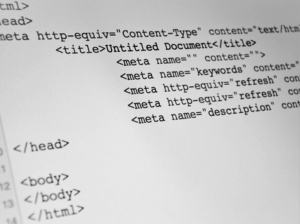
Who wouldn’t like more website traffic and engagement? If you’re looking for tips that you can apply today for making your quality Web pages perform even better, you’ve come to the right place.
In my last post, I shared with you some foundational steps for making your content stand the test of quality both by Google and your target audience. In this post, I’m going to show you the basics of formatting and optimization so that:
- Your Web pages can be crawled, understood and indexed with ease by the search engine bots
- Your content is presented in a way that makes it effortless for your visitors to engage with
Ready to get started? OK, let’s go!
Mind the Functionality of Your Web Pages
You may have never thought about the impact that the layout of your content has on the reader or that a Title tag has on a search engine bot – that’s OK, because that’s what we’ll talk about here.
Beyond the art of content writing, you have the science of layout, formatting and optimization.
Here, I’m referring to laying out Web pages in a way that’s easy for your audience to navigate, and offers something engaging for everyone. I’m also referring to making pages structurally sound in a way that the search engine spiders can crawl and index easily.
In general, here are some of the things you want to consider with your individual Web pages …
For your audience:
- Does it cater to the way different people like to consume information with a mix of video, audio and text?
- Is it easy to read? What about on different devices? Remember that long walls of text with no formatting can turn readers off; make the experience effortless.
- Does it offer suggestions for additional content on your site where people can learn more information? You want to keep visitors as long as possible by continuing to answer their demand for information.
Two oldie-but-goodie articles I wrote on these topics are worth a read over on the Bruce Clay blog and in their newsletter:
- How to Use Learning Styles to Boost Your Content Strategy – discusses the various types of ways people like to learn, and how to create content for them.
- Blogging and the User Experience – talks about formatting, writing styles and much more.
For the search engines:
Meta Information
Ensure the page’s Meta information has unique titles and descriptions. Meta information is found on the code side of the page and helps the bots understand what the page is about; it also serves as the title and description in the search engine results pages – so you want it to be compelling.
Here are a few guidelines:
- If you have a WordPress site, install the Yoast WordPress SEO plugin that allows you to easily input Meta titles and Meta descriptions
- Depending on the content management system you use, you may not be able to easily update the Meta information on your website; check into this and look for an SEO-friendly CMS if it’s giving you a problem (chances are, it’ll be giving you more problems from an SEO perspective than just that)
- Meta titles should be around 55 characters including spaces, and each Meta title should be unique on your site
- Meta descriptions should be 156 characters including spaces, and offer a compelling and straightforward description of the page. You want to entice clicks from the search engine results but easily communicate to the search engine bots what the page is about.
- If you are targeting specific keywords, ensure the main keyword for the page shows up in the Title tag and Description tag once.

Heading Tags
You want to use Heading tags for your headline and subheads on the page. This helps to organize the content both for the readers visually (as Heading tags have formatting associated with them) and for the search engine bots so they can better understand the main points and secondary points in the page.
We typically refer to these tags as H1 (main headline), H2 (sub-headline), H3 (sub-sub-headline) and so on. On the code side of the page, these look like the following:
<h1>Main Headline Here</h1>
<h2>Subhead Here</h2>
<h3>Subhead of H2 Here</h3>
An H2 tag always comes after an H1 (of which there should only be one H1 tag). And H3 comes in as a sub-point of H2, and so on. When it fits naturally, include your main keyword in the Header tags.
Site Speed and Mobile Responsiveness
Site speed is a signal in Google’s ranking algorithm and for good reason: nobody wants to have to wait for his or her content to load. Being mobile friendly is now more important than ever, too, as mobile devices continue to rise as the device of choice for both research and purchasing online.
Improving both of these areas when it comes to your Web pages improves your chance of being found in the search results and keeping visitors on your site. In fact, Google just recently launched an update to its algorithm that expands the use of its mobile-friendly signal.
What that means to you is that if you’re not mobile responsive, you could be losing traffic as of April 21. To learn more about that, check out my blog post over at bizbuzzcontent on the algorithm update and mobile content.
The good news is: you can improve at any time. Use some of the tools I mentioned in the article I just linked to for mobile, and you an also dig into the page speed metrics on your site via Google Analytics to see how specific Web pages are performing, and what you can do to improve them.
Great functionality on your site not only allows the search engines to better do their job of crawling and indexing your site so that it can be served in a search result, but also boosts user experience.
For more information on basic optimization techniques, refer to Google’s “Search Engine Optimization Starter Guide.”
I hope this two-part series on creating quality content that drives traffic and engagement helps take the anxiety out of content creation and gives you what you need to optimize your content in a way that drives more traffic to your site, and keeps your visitors longer.
Now go forth, and create quality Web content!